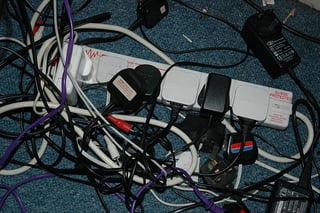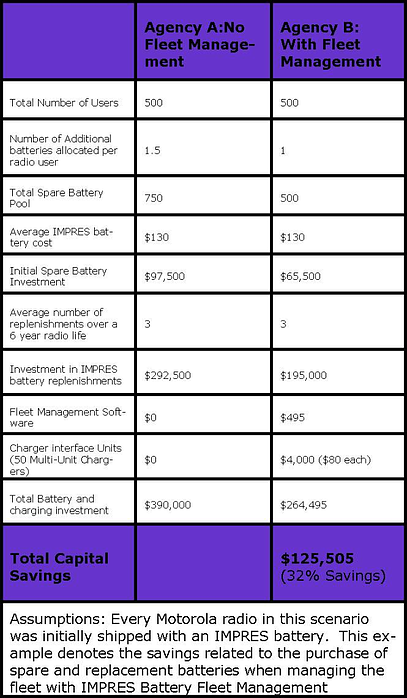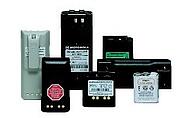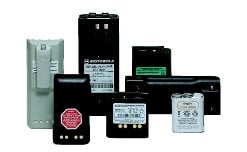With the end of the calendar year quickly approaching, many of you are looking at your two-way radio budget and realizing you will have money left to spend. You want to spend it so you don't lose it, but you also want to be smart about what you purchase. Here are 11 ideas on ways to spend that left-over budget money.
1. Preventative Maintenance - Check it before you wreck it. Call your local radio repair shop and set up a preventative maintenance check. If you have a backbone system, a technician can come in and complete a tune up to make sure all of your equipment is running efficiently and is not in need of being replaced. You can also have your portables checked. Are they tuned and aligned properly? Are they programmed correctly? How are your batteries, antennas and belt clips?
2. New Batteries - How old are your batteries? The average battery life is 12-18 months, depending on usage. Old and under performing batteries can effect the operation of your radio. Another good idea is to have spare batteries for your radios, especially if they are being used on long and/or multiple shifts.
3. Spare Radios - In addition to having spare batteries, it is also a wise decision to have spare radios on hand. These can be programmed and ready to go in case one needs repair or an employee misplaces their radio. This would help to prevent communication down-time and helps to keep you efficiency to the level you are used to.
4. Multi-Unit Chargers - Do you have six plugs running into a power strip charging your radios? Have you thought about multi-unit chargers? These would allow you to charge up to six batteries at one times, from one device. This will help you keep your spare batteries charged as well as create a centralized charging location.
 5. Antennas - The antenna on your two-way radio can take a beating. Have you looked at them lately? If you can see the damage it should be replaced (bent, cracked, split etc.)
5. Antennas - The antenna on your two-way radio can take a beating. Have you looked at them lately? If you can see the damage it should be replaced (bent, cracked, split etc.)
6. Earpieces - Earpieces are a great way to keep your two-way radios from being intrusive to your environment. They allow your people to have conversations without everyone else hearing them. If you don't have any, you may want to consider some. With the different varieties available, such as Bluetooth or "secret service style" surveillance kits, you will have your choice of what will work best for your organization. If you already have them, make sure to check your ear buds and acoustic tubes. These can get grotty over time and are easy to replace.
7. Cases - Your employees are carrying their radios around with them all day. They get banged, bumped and scratched. Investing in cases will help to keep down the physical wear and tear on the units.
8. Battery Fleet Management - Motorola Solutions has an IMPRES Battery Fleet Management system. This works with IMPRES batteries and allows you to monitor battery usage and make an informed decision when it comes to replacing your batteries.
9. Digital Conversions - There are many benefits of converting from analog to digital. We have covered this in previous blog posts (/bid/106819/6-Things-About-Digital-Two-Way-Radios-Your-Boss-Wants-To-Know and/bid/38413/Digital-Two-Way-Radios-The-Future-of-Professional-Radios so why not start now? You can do a slow conversion of your fleet or do it all at once, whatever works best for your organization.
10. Maintenance Contracts - No one lies getting repair bills they did not anticipate. Consider purchasing a maintenance contract to help prevent this. Having a contract will allow you to budget for your repairs and increase your peace of mind.
11. Radio Repair Bank - Having a radio repair bank is an alternative to a maintenance contract. This works on a debit basis where you pre-pay for repairs allowing you to utilize budget money now, and as your radios need repairs or preventative maintenance checks, the amount gets deducted from that bank.
These are just a few ways to use that left-over budget money. Your local sales rep can help you decided what works best for your company. Don't let that budget money go to waste, contact them today.
*Photo Courtesy of Jason Rogers



 Spring is a time of renewal, a time for cleaning out the old and a time for fresh starts. This is true for so many aspect of life. We clean our closets of old clothes, we clean the dust bunnies from under our couches, and we clean the dead wood from our gardens but did you think to clean out your dead batteries? How about your broken earpieces? Spring is not just for cleaning our homes but also a great time to "clean" our communications.
Spring is a time of renewal, a time for cleaning out the old and a time for fresh starts. This is true for so many aspect of life. We clean our closets of old clothes, we clean the dust bunnies from under our couches, and we clean the dead wood from our gardens but did you think to clean out your dead batteries? How about your broken earpieces? Spring is not just for cleaning our homes but also a great time to "clean" our communications.

 ur company's needs. Feel free to ask any of our expert engineers or certified sales reps for assistance in choosing.
ur company's needs. Feel free to ask any of our expert engineers or certified sales reps for assistance in choosing.
